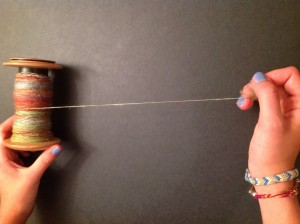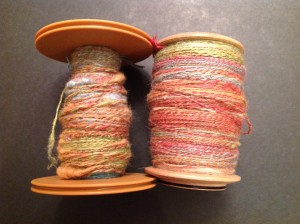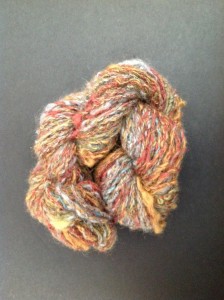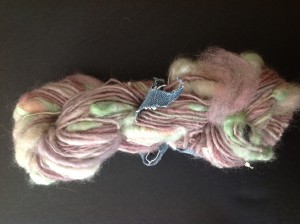The Art of Spinning
These days most spinners are the equivalent of artists who spend all their time drawing straight lines on a piece of paper. I, too, have spent the last seven years learning how to make even, straight lines in wool, cotton, silk, bison, soysilk, mohair, and many other fibers.
Occasionally I would attempt some new variety of “novelty yarn,” yet even the name seemed frivolous and the resulting yarns seemed more of an excuse for bad technique than a true artistic statement.
Recently I have ventured beyond the antiquated view of “novelty yarns” and into the new world of art yarns: yarn that is art in its own sense, rather than simply an intermediate step in the creation of a final product.
Art yarns are often made more deliberately and with advanced techniques that require a technical grounding in spinning than a “follow the directions” novelty yarn. Indeed, the spinner must first know how to draw a straight line before he or she embarks on a full composition.
The thing that has held my attraction to art yarns solidly for the last few years is the inherent creativity and new found potential in every piece of roving. No longer is every ounce of wool, silk hankie, or puff of mohair destined to become a sport weight two-ply yarn. In fact, creating art yarns allow even the most technical spinner to get more in touch with the fiber.
The curl and luster of a cascade of mohair locks should be preserved, not stifled. And a multicolored rainbow bat could look garish without care and imagination. So, today, break out of the straight and narrow and into a completely new spinning adventure. Get in touch with your spinning creativity with these quick ideas:
1) Spin with your eyes closed. You may be surprised with the results.
2) Combine two, three, or even four different spinning techniques into one yarn. Example: a cable yarn of core-spun, Turkish knots, twists, and slub yarns.
3) Create a composition of different fibers, add-ins (pieces of fabric, feathers, beads), and colors to make your own carefully designed piece of art.
4) Listen to music as you spin and let it inspire the yarn you create.
5) Set a basket of scrap fiber next to your wheel and try to unify the disparate elements into a harmonious yarn.
Melody Stein has long been the Redwood Guild’s youngest member. We are losing her this year as she leaves for Cornell University and her freshman year at college.
Click HERE to go to the next article



